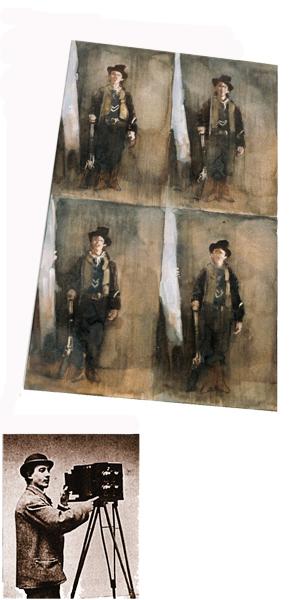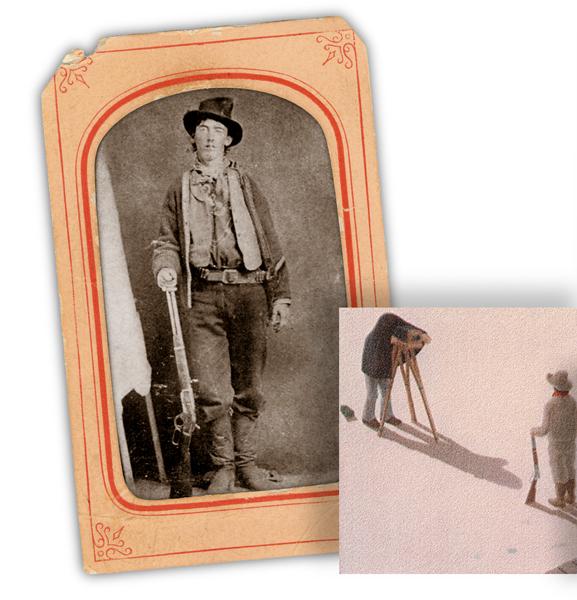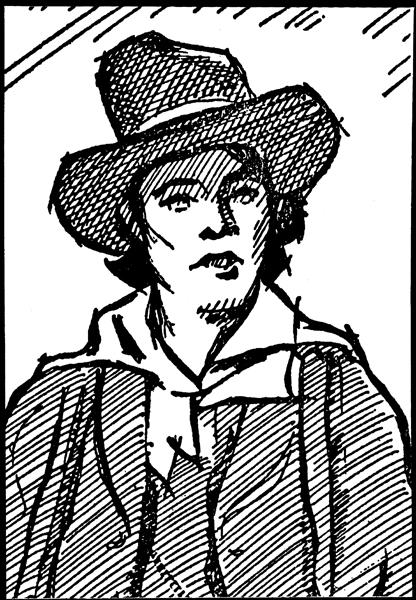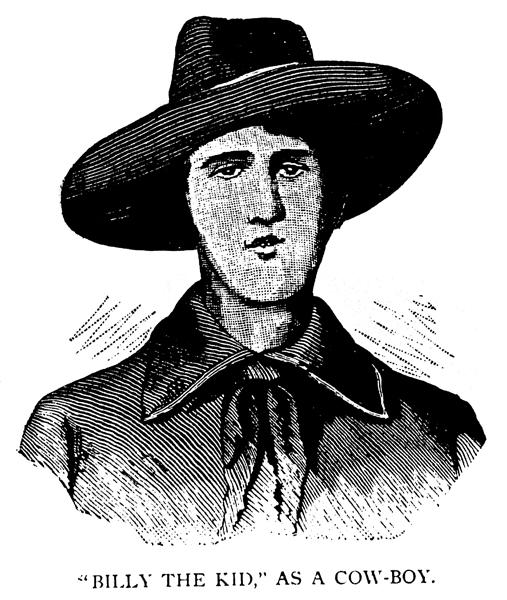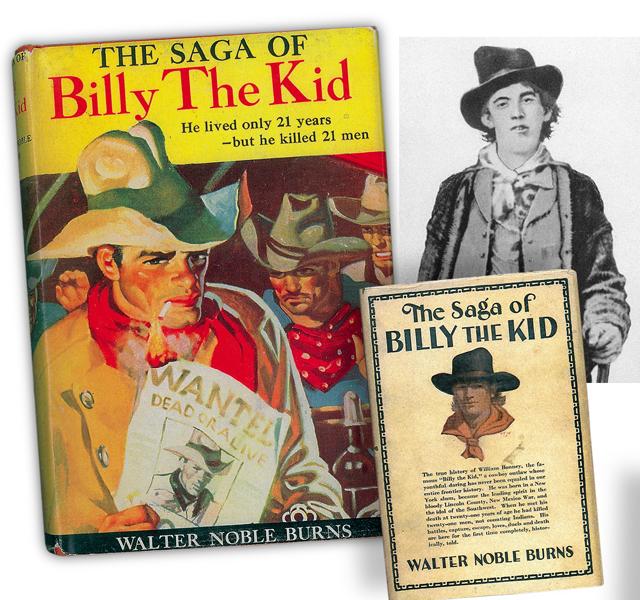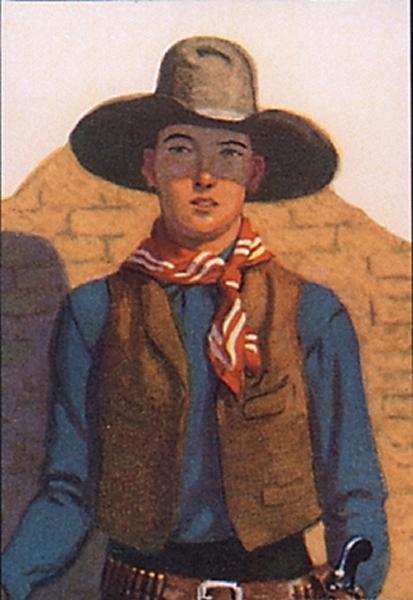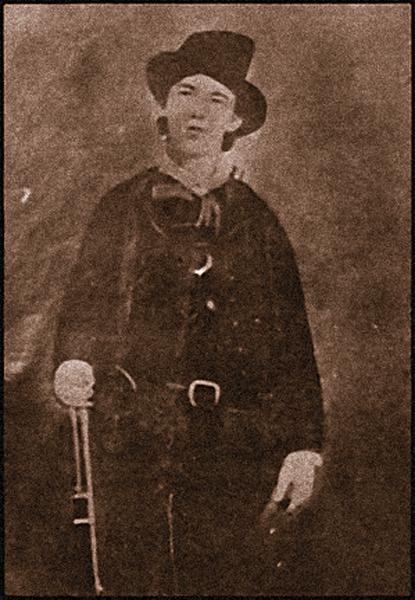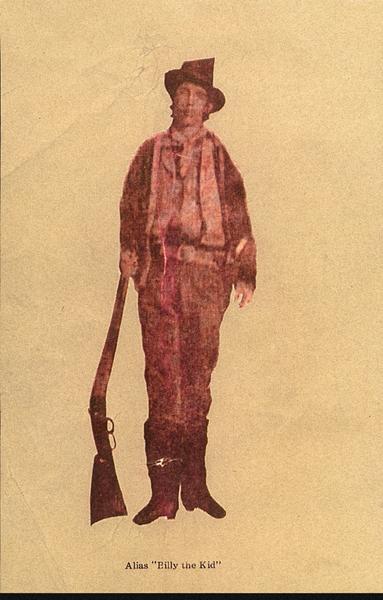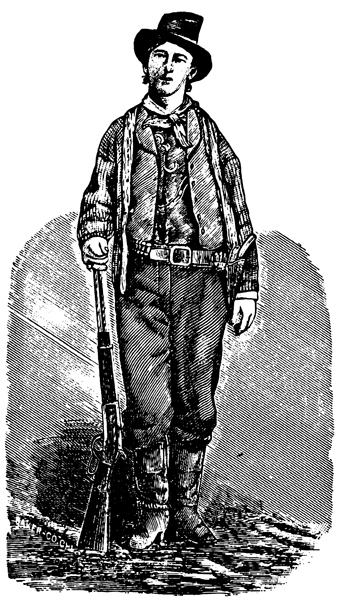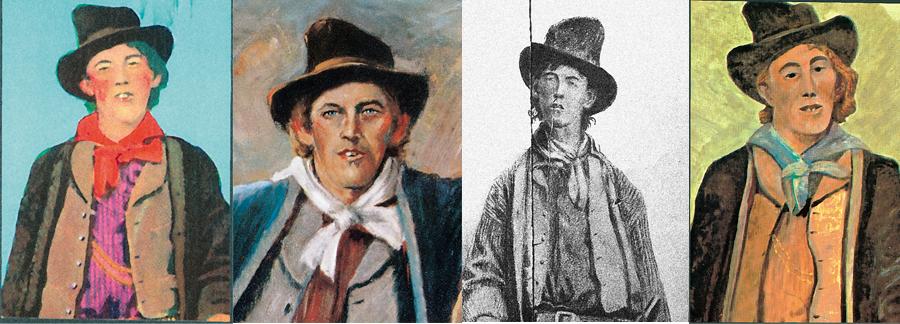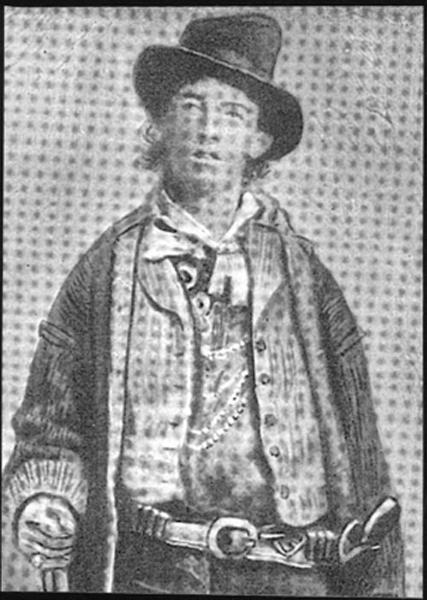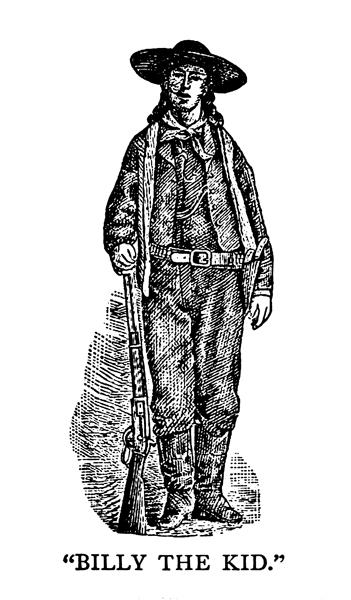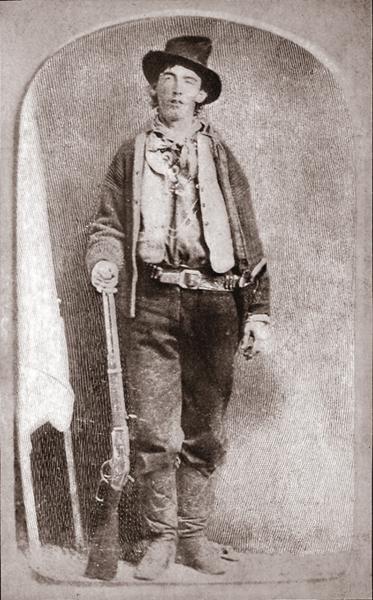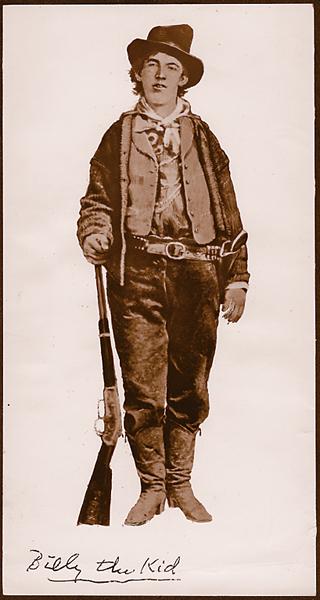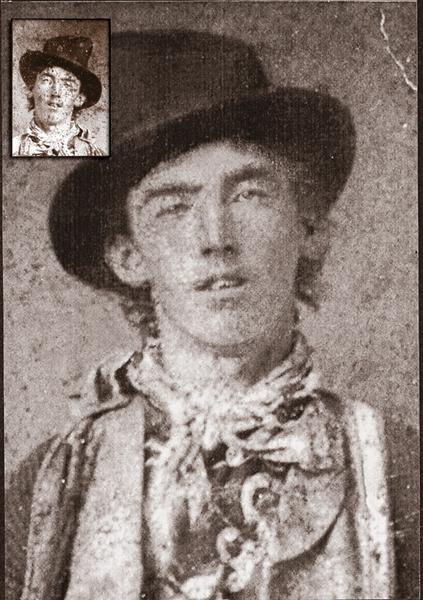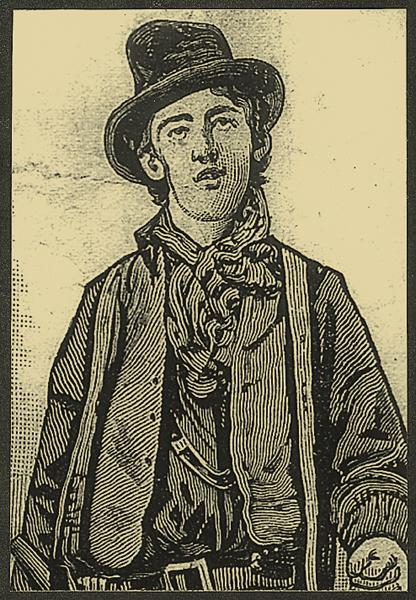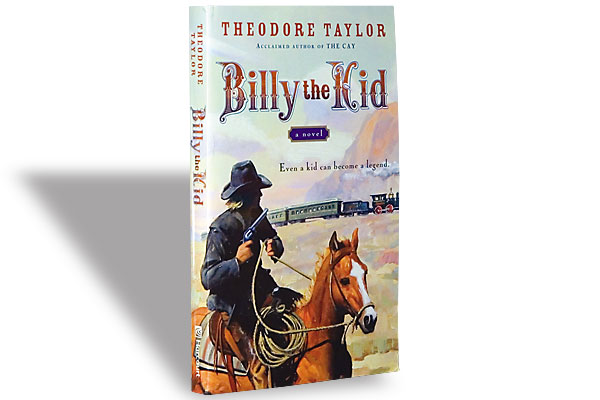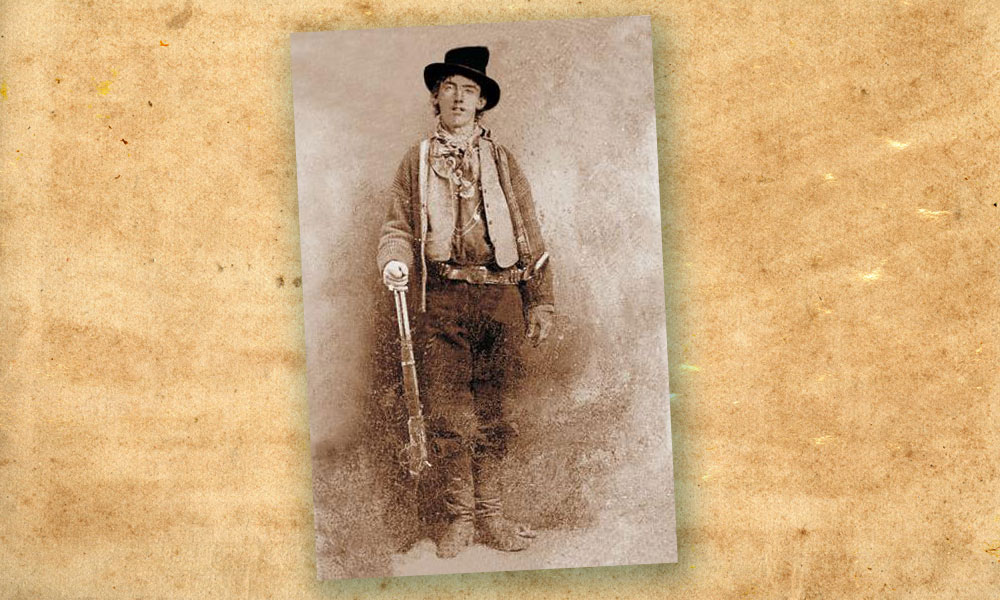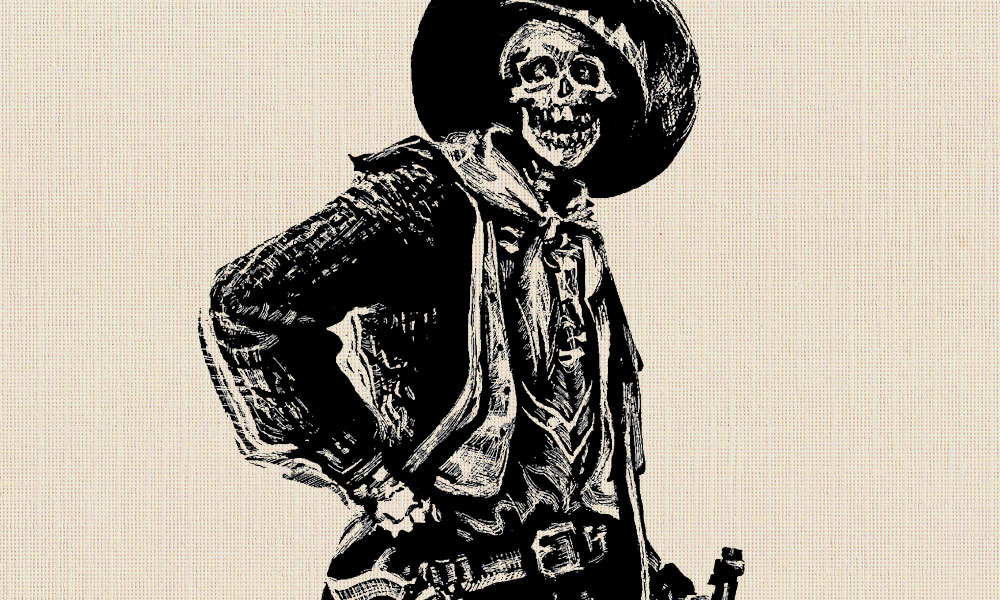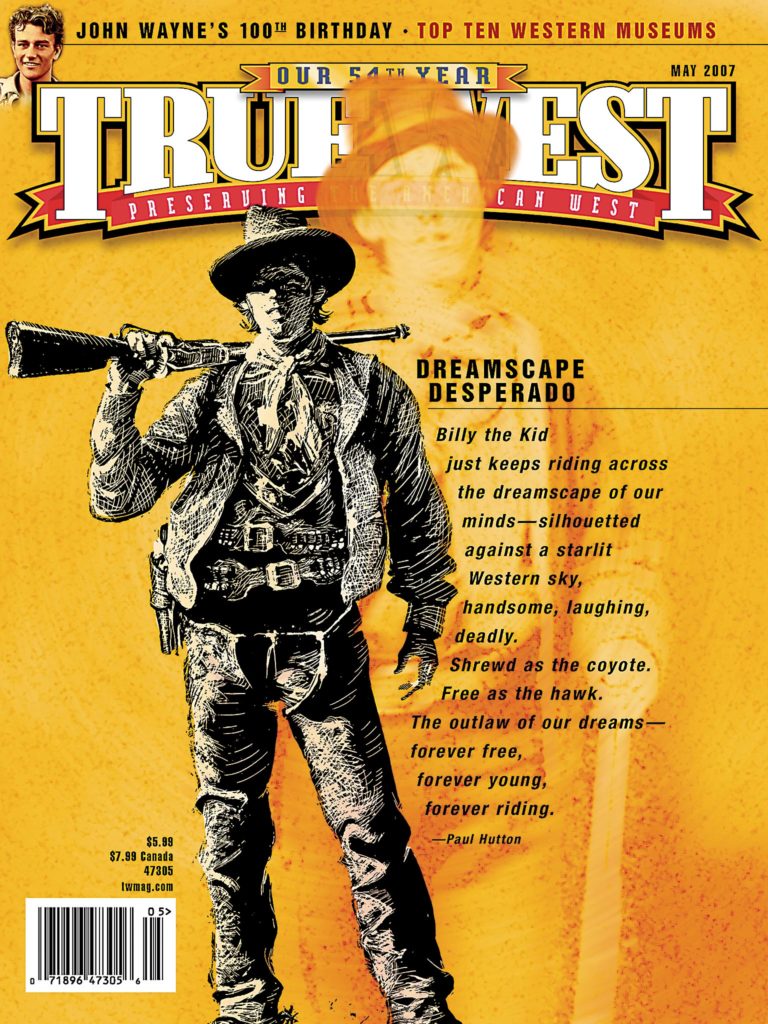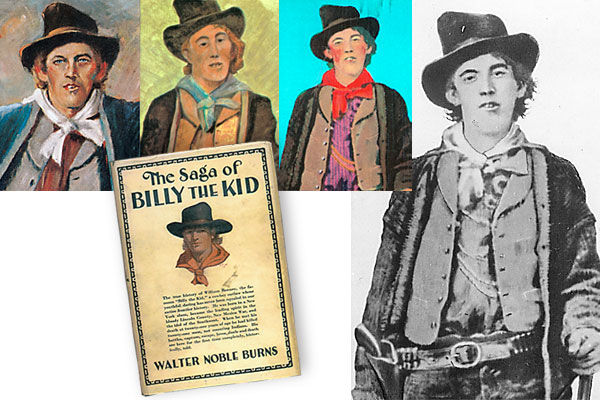 Some 126 years ago, a traveling photographer snapped a picture in the remote frontier community of Fort Sumner, New Mexico, that would become one of the most famous and most valuable photographs in history. It was not well produced, and the young cowboy who posed for it was not impressive looking.
Some 126 years ago, a traveling photographer snapped a picture in the remote frontier community of Fort Sumner, New Mexico, that would become one of the most famous and most valuable photographs in history. It was not well produced, and the young cowboy who posed for it was not impressive looking.
He appeared unprepared to have his picture taken, although when the opportunity came, which was not often at that time and place, he stood in front of the camera, perhaps at the urging of companions.
The young cowboy was a small-time rustler and not particularly sought by the law. He was using the name William H. Bonney, but everyone called him “Kid.” No more than 20 years old, probably younger, Kid had experienced a lot of action in his short life. The Lincoln County War was over, and he was wandering about eastern New Mexico and the Texas Panhandle, making a nuisance of himself with the cattlemen of the area. These cattlemen were about to make a real effort to bring his rustling to a halt, and in so doing, they were to make a lasting legend of the young cowboy. Shortly after the photo was taken, his notoriety quickly spread and the journalists dubbed him “Billy, the Kid.”
When the Kid posed for the tintype photo, though, life was good. The young man was probably planning to give his picture to friends. The camera was set to produce four images on a single metal plate, which afterwards was cut into four separate, but identical, images. We know he gave a copy to one of the Dedrick brothers, Dan or Sam, companions who were possibly with him at the time it was taken. This copy survived … until recently at least. Stories that have been passed down tell us he gave his other copies to friends in Fort Sumner, including Deluvina, an admirer but not a girlfriend, who was a Navajo servant of the Maxwell family. This copy of the tintype passed through several hands in later years and was supposedly destroyed in a fire. We can only speculate who received the Kid’s other two copies, as they have not surfaced.
Paulita Maxwell, one of the Kid’s favorite girlfriends who may have been given a copy of the tintype, told author Walter Noble Burns: “I never liked the picture. I don’t think it does Billy justice. It makes him look rough and uncouth. The expression of his face was really boyish and very pleasant. He may have worn such clothes as appear in the picture out on the range, but in Fort Sumner he was careful of his personal appearance and dressed neatly and in good taste.”
He may not have been dressed the way Paulita remembered him, but we should be grateful the Kid did not put on a suit, which he probably never owned, and sit stiffly in a studio for the only photograph that he left for posterity.
This most famous of all photographs, however, was also to become the most misunderstood and abused of all photos. The original, being a tintype, is a mirror image. For years, people thought the Kid was left handed because his pistol appeared to be on his left hip.
In the tintype (shown on the opposite page), a reflector screen has been placed next to the Kid (it should not have appeared in the finished photo). This lighting apparently caused the Kid’s jaw line to be indistinct. Many have interpreted his face to be asymmetrical. Mistakes in the chin and jaw by photographers attempting to retouch the photo and by engravers and artists attempting to duplicate the photo have caused most of the confusion about the Kid’s appearance. His face has been made to look lopsided, with a long, wide and ugly jaw.
Over the years, dozens of old photos of men with a long jaw have been proclaimed to be long lost photographs of Billy the Kid. In reality, they look nothing at all like him.
A First Look at the Kid
The Saga of Billy the Kid by Walter Noble Burns, originally published in 1926 (left), introduced thousands of people to Billy the Kid, including me. The book had no photographs, but the reprint copy I read had a colorful artist’s painting on the cover (far left). That picture established my initial mind’s image of the Kid … and it was exciting!
Later on, I saw, for the first time, the photo of Billy the Kid in George Hendricks’ book The Badman of the West. I was shocked and disappointed! Unfortunately the photo (left) had been poorly retouched by N.H. Rose, who distorted it almost beyond recognition. Since the 1930s, the Rose copy has been the most frequently used image of the Kid, understandably bringing forth comments such as, the Kid looked like an “adenoidal moron” or a “cretin.”
Woodcut Kid
A few months after his photo was taken, the Kid was captured and then confined in a jail in Santa Fe, New Mexico. More than halfway across the nation, Boston’s Illustrated Police News of January 8, 1881, reported the Kid’s capture and published a woodcut engraving that was obviously fashioned from the tintype (see left).
Publishers did not have the technology to print actual photographs so engravings were printed instead. The illustration appeared again in the March 5, 1881, issue of the same publication. “The Illustrated Police News … contains a miserably concocted wood-cut of Billy the Kid. If the picture hadn’t been labeled, it might have been taken for either Deacon Sanford or Gus Williams, the Dutch comedian,” commented the Daily Optic of Las Vegas, New Mexico.
This engraving is indeed a poor copy of the original. The mistaken jaw line is its biggest problem, as engravers and artists depict that feature in their images for the next century.
First Book on Kid
The next attempt at a portrait of the Kid to appear in print (left) was in the first book about him, The True Life of Billy the Kid by Edmond Fable, published in Denver in July 1881, within weeks after the Kid’s death. The book is exceedingly rare, there being only two known copies. The portrait is an artist’s conception, but almost certainly based on the tintype or the Police News woodcut, with the same distortion of the jaw. The artist did give him a more appropriate looking hat than he was actually wearing in the photo.
Pat Garrett’s Kid
The sheriff who killed the Kid wrote, with help, a book that was printed in Santa Fe a year after the Kid’s death. A steel engraving of the tintype (left), produced by a Chicago engraver, was used as the frontispiece and on the back of the rear paper cover. It was a fair representation of the image; the jaw was not quite right, being slightly lopsided, but it wasn’t so bad as in the two previous publications.
Siringo’s Kid
Three years later, in 1885, Charley Siringo’s A Texas Cowboy appeared and became very popular, receiving much wider distribution than Garrett’s book. Siringo had a chapter on the Kid and used yet another engraving (above) based on the tintype. Perhaps Siringo made it look more like he remembered the Kid, with a wide-brimmed sombrero and long flowing hair, reminiscent of Buffalo Bill Cody or Wild Bill Hickok.
Real Kid Appears
Twenty-seven years after the photograph was taken, it appeared in The Story of the Outlaw by Emerson Hough in 1907 (left). History of New Mexico, a large two volume, anonymously-compiled, leather bound book appeared that same year and has what is still to this day one of the best-published copies of the Kid photo—clean, unmarred and relatively clear. How or where the publishers got their copies of the photo is unknown. Some believe a carte de visite (an image on paper) was made from the tintype back in the 1880s. If so, no such copies are known to exist today.
What did billy the kid really look like?
A reporter for the Las Vegas Gazette left us the best verbal description of Billy the Kid in an interview conducted with the Kid while he was in jail in Las Vegas, following his capture by Sheriff Pat Garrett in December 1880:
“…he looked and acted a mere boy. He is about five feet eight or nine inches tall, slightly built and lithe, weighing about 140; a frank open countenance, looking like a school boy, with the traditional silky fuzz on his upper lip; clear blue eyes, with a roguish snap about them; light hair and complexion. He is, in all, quite a handsome looking fellow, the only imperfection being two prominent front teeth slightly protruding like squirrel’s teeth, and he has agreeable and winning ways.”
This description is confirmed indirectly by the fact that the Kid had no shortage of young female admirers. Numerous acquaintances, both friend and foe, recalled his pleasing personality.
With the distorted images of the Kid appearing over the years, though, it was difficult for me to reconcile this image with those descriptions. Then in 1985, I received a call from an excited (now deceased) John Meigs, the executive director of the Lincoln County Heritage Trust. He was about to pick up an original Billy the Kid tintype! When he returned, I traveled to San Patricio, New Mexico, and John gave me some of the first photographs made directly from the tintype, which had been handed down through the family of the Dedricks, companions of the Kid. The tintype was not in the best of shape, having many scratches and streaks, but it was the real thing—no retouching!
With only the addition of the slightest bit of a line along the jaw, washed out by the lighting in the original, and removal of the blemishes resulting from the chips and scratches on the surface of the tintype, we finally have a good image of Billy the Kid. I think he really does fit the descriptions of Paulita, the Las Vegas Gazette reporter and others who knew the Kid in this photo, a man just shy of 20.
That Darn Rose Photo!
A pioneer collector of outlaw photographs, Noah H. Rose attempted to “improve” his photos by retouching them. Authors and publishers utilized his collection frequently in the 1930s and continued to do so after he died in 1952, when the collection passed on to outlaw historian Ed Bartholomew. Even those who should know better still purchase copies of this retouched photo from the Rose collection owned by the University of Oklahoma’s library or the National Archives. The Rose photo, more than any other, has tainted the public’s impression of how the Kid looked. It is time for that photo to be put to bed.
Photo Gallery
– Illustrated by Bob Boze Bell –
The next attempt at a portrait of the Kid to appear in print (left) was in the first book about him, The True Life of Billy the Kid by Edmond Fable, published in Denver in July 1881, within weeks after the Kid’s death. The book is exceedingly rare, there being only two known copies. The portrait is an artist’s conception, but almost certainly based on the tintype or the Police News woodcut, with the same distortion of the jaw. The artist did give him a more appropriate looking hat than he was actually wearing in the photo.
The Saga of Billy the Kid by Walter Noble Burns, originally published in 1926 (left), introduced thousands of people to Billy the Kid, including me. The book had no photographs, but the reprint copy I read had a colorful artist’s painting on the cover (far left). That picture established my initial mind’s image of the Kid … and it was exciting!
Later on, I saw, for the first time, the photo of Billy the Kid in George Hendricks’ book The Badman of the West. I was shocked and disappointed! Unfortunately the photo (left) had been poorly retouched by N.H. Rose, who distorted it almost beyond recognition. Since the 1930s, the Rose copy has been the most frequently used image of the Kid, understandably bringing forth comments such as, the Kid looked like an “adenoidal moron” or a “cretin.”
The sheriff who killed the Kid wrote, with help, a book that was printed in Santa Fe a year after the Kid’s death. A steel engraving of the tintype (left), produced by a Chicago engraver, was used as the frontispiece and on the back of the rear paper cover. It was a fair representation of the image; the jaw was not quite right, being slightly lopsided, but it wasn’t so bad as in the two previous publications.
– All images courtesy Robert G. McCubbin –
Three years later, in 1885, Charley Siringo’s A Texas Cowboy appeared and became very popular, receiving much wider distribution than Garrett’s book. Siringo had a chapter on the Kid and used yet another engraving (above) based on the tintype. Perhaps Siringo made it look more like he remembered the Kid, with a wide-brimmed sombrero and long flowing hair, reminiscent of Buffalo Bill Cody or Wild Bill Hickok.
Twenty-seven years after the photograph was taken, it appeared in The Story of the Outlaw by Emerson Hough in 1907 (left). History of New Mexico, a large two volume, anonymously-compiled, leather bound book appeared that same year and has what is still to this day one of the best-published copies of the Kid photo—clean, unmarred and relatively clear. How or where the publishers got their copies of the photo is unknown. Some believe a carte de visite (an image on paper) was made from the tintype back in the 1880s. If so, no such copies are known to exist today.
A pioneer collector of outlaw photographs, Noah H. Rose attempted to “improve” his photos by retouching them. Authors and publishers utilized his collection frequently in the 1930s and continued to do so after he died in 1952, when the collection passed on to outlaw historian Ed Bartholomew. Even those who should know better still purchase copies of this retouched photo from the Rose collection owned by the University of Oklahoma’s library or the National Archives. The Rose photo, more than any other, has tainted the public’s impression of how the Kid looked. It is time for that photo to be put to bed.
A few months after his photo was taken, the Kid was captured and then confined in a jail in Santa Fe, New Mexico. More than halfway across the nation, Boston’s Illustrated Police News of January 8, 1881, reported the Kid’s capture and published a woodcut engraving that was obviously fashioned from the tintype (see left).
Publishers did not have the technology to print actual photographs so engravings were printed instead. The illustration appeared again in the March 5, 1881, issue of the same publication. “The Illustrated Police News … contains a miserably concocted wood-cut of Billy the Kid. If the picture hadn’t been labeled, it might have been taken for either Deacon Sanford or Gus Williams, the Dutch comedian,” commented the Daily Optic of Las Vegas, New Mexico.
This engraving is indeed a poor copy of the original. The mistaken jaw line is its biggest problem, as engravers and artists depict that feature in their images for the next century.


